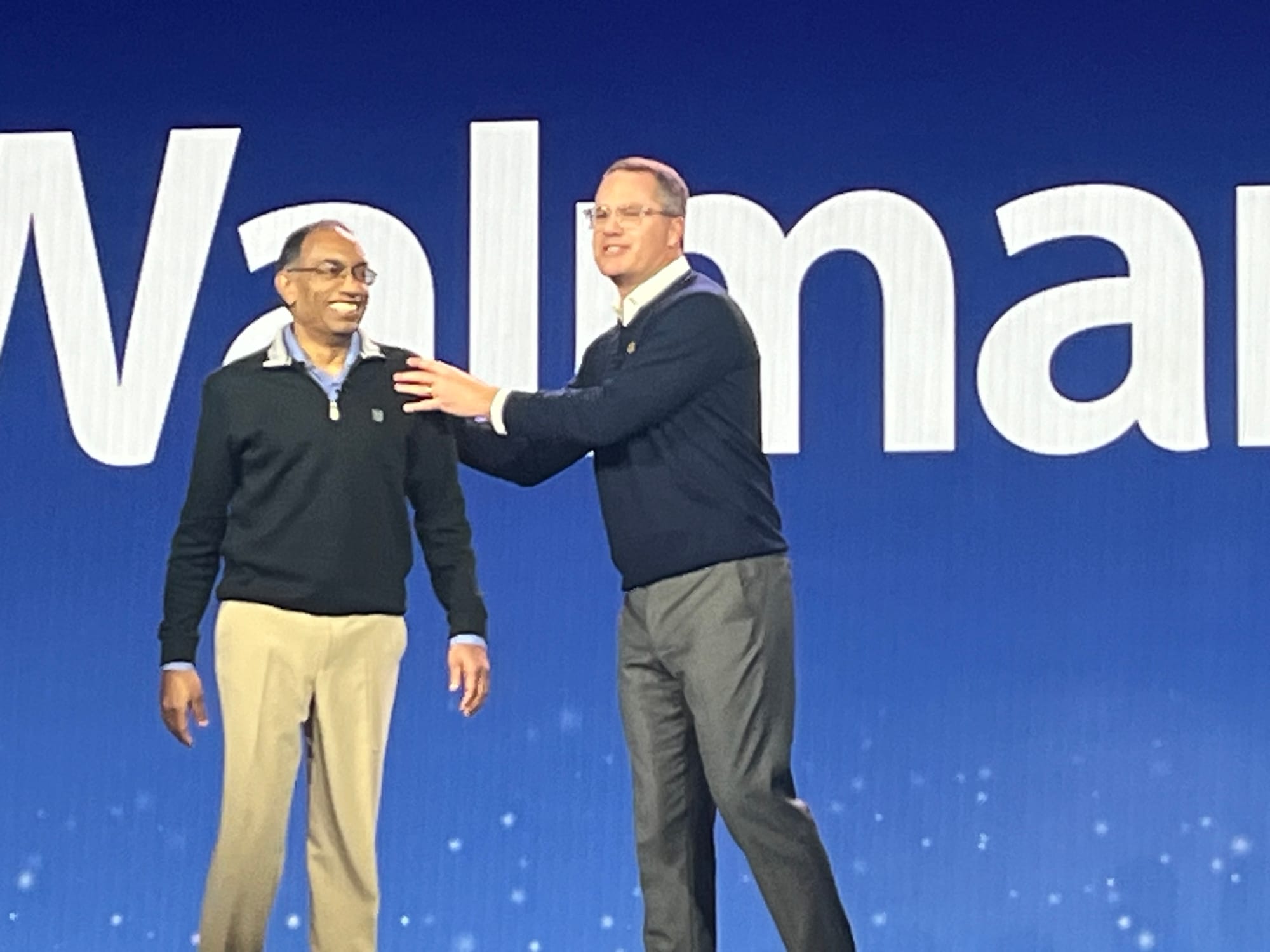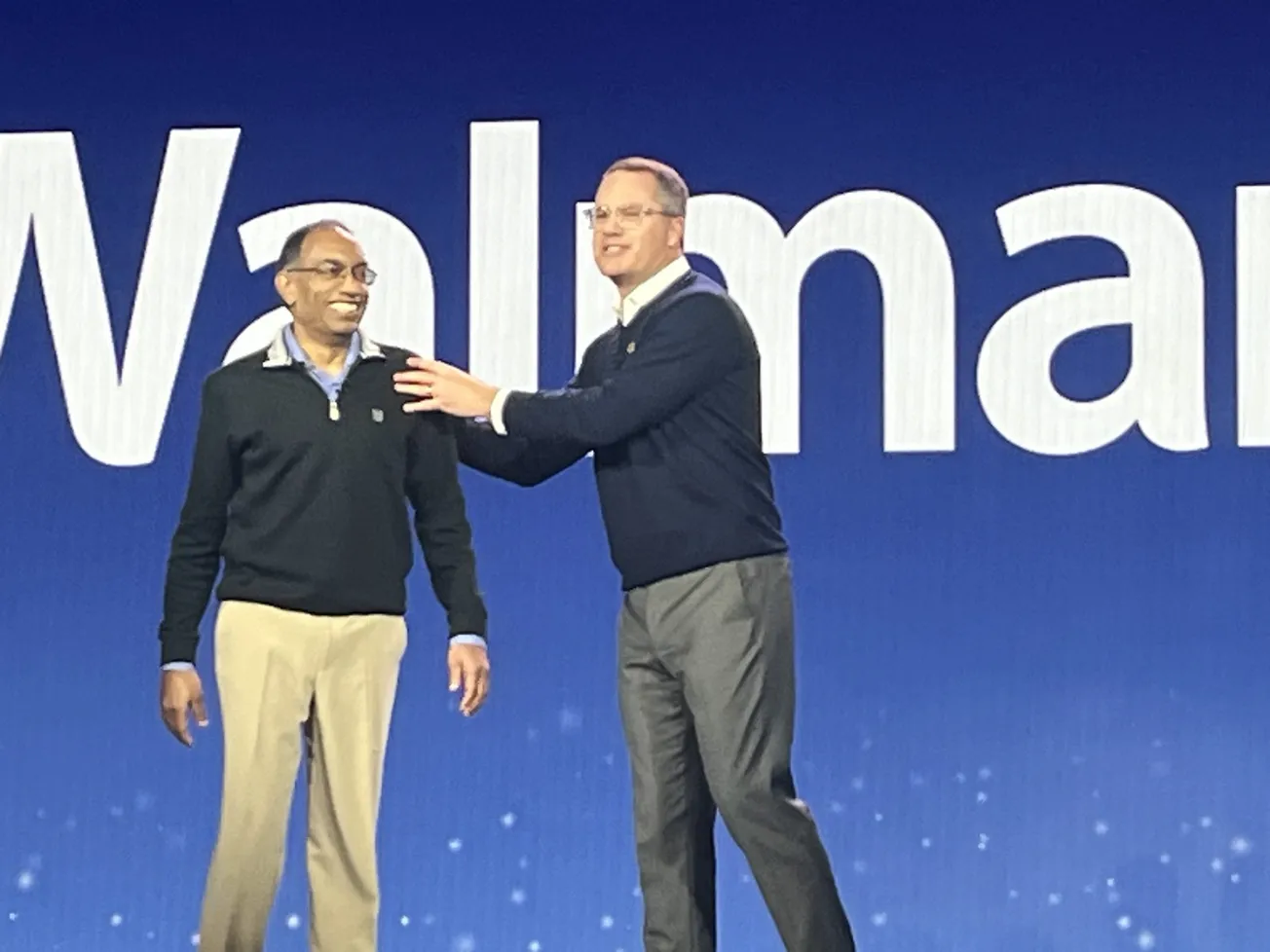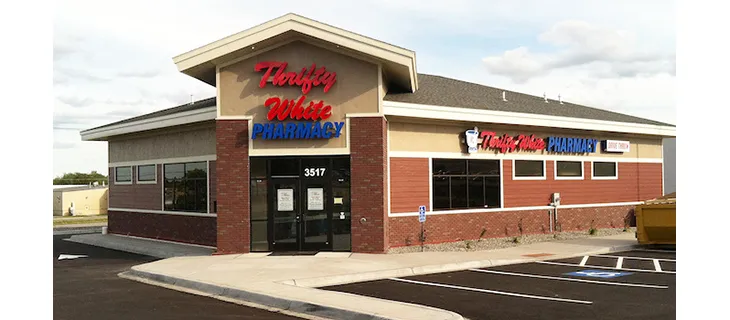When the history of Doug McMillon’s tenure as chief executive officer of Walmart is written, the central theme is sure to be the transformation of the company from one entrenched in brick-and-mortar retailing into a multidimensional enterprise. Walmart’s striking evolution over the decade since McMillan became CEO stems from his grasp of technology’s potential to radically reshape the retail business — and his determination to keep the company in the vanguard of the industry.

Doug McMillon (right) with Microsoft’s Satya Nadella at CES.
McMillon and several of his colleagues provided a reminder of just how far Walmart has come during a keynote presentation at CES 2024 in Las Vegas. They discussed their vision of a new type of commerce — adaptive retailing — which hinges on technology and the role it is playing in creating a shopping experience that is interconnected and frictionless.
“We build technology to serve people and not the other way around,” said McMillon, who was joined by, among others, chief people officer Donna Morris; chief technology and development officer Suresh Kumar; chief merchandising officer Latriece Watkins; and Megan Crozier, Watkins’ counterpart at Sam’s Club.
“Walmart’s purpose is to help people live better and, today, more than ever, advances in technology make it feel like anything is possible. Our technology road map is compelling, and we’re very excited about it, but we’re clear that we are a people-led, tech-powered company. People, our customers and associates, come first, and we’ll put technology to work to serve them better than ever.”
Among the consumer-facing initiatives highlighted by the executives were innovations in artificial intelligence and artificial reality designed to streamline and simplify shopping, including new generative AI-powered search tools and in-home replenishment, along with a beta-stage social commerce platform called Shop With Friends. In addition, Walmart is expanding drone delivery in the Dallas–Fort Worth market, offering the service to 1.8 million additional households there. And, as an adjunct to its popular Scan & Go system, Sam’s Club has started to roll out AI and computer vision technology across the chain to save members more time as they leave the store.
“While omnichannel retail has been around for decades, this new type of retail takes it a step further,” noted Kumar. “It’s retail that is not only e-commerce or in-store, but a single, unified retail experience that seamlessly blends the best aspects of all channels. And for Walmart, adaptive retail is rooted in a clear focus on people.”
Along with the consumer-oriented developments, the executives announced plans to assist associates. Use of Walmart’s proprietary My Assistant tool, which, among other things, helps draft and summarize documents, will be expanded. In the coming year, headquarters associates in 11 countries will be able to interact with My Assistant in their native language.
Finally, Walmart announced the commitment to ambitious clean energy goals. By the end of the decade, the company plans to advance its transition to emissions-free energy by enabling up to 10 gigawatts of new clean energy projects. That’s the equivalent of the annual power consumption of more than 2 million households.
For part of the presentation, McMillon was joined by Satya Nadella, chairman and CEO of Microsoft, one of Walmart’s key technology partners. The two executives discussed the promise and pitfalls of technology. Nadella offered praise for the retailer’s approach.
“We all have people who work in our companies who are trying to accomplish things for our customers and empowering them so that they can go on to achieve big things,” he said. “That’s fantastic to see. So that’s the place where I think real revolution starts.
“Then the second place is what you just talked about, our customers — to be able to use some of this technology to transform the ultimate customer experience. Why do I shop at Walmart? To accomplish my intent. And to be able to understand that intent and the way you can have that, I think is a very powerful place.”
Nadella went on to say that one “needs to be mindful of the unintended consequences of this technology.” That idea echoed comments made earlier by McMillon, who said that business leaders stand at a turning point — they can either choose to pursue technological advances with little regard for other considerations or adopt what he characterized as a more nuanced approach.
“It’s one where the benefits of technology are pursued, but people are considered along the way,” McMillon said. “It’s about our heads and our hearts.
“The underlying principle is that we should use technology to serve people. This path enables people to do things in more efficient and enjoyable ways. We’re choosing the second path. We love what technology can do, but we’re building it in a way that creates better careers. At the same time, it creates better customer experiences and a stronger business.”
By maintaining customers and associates as the focal point of his thinking, McMillon is adhering to the purpose that has always guided Walmart. Although some of the means for doing so may be changing, the goal remains what it has always been — to help people save money so they can live better.









